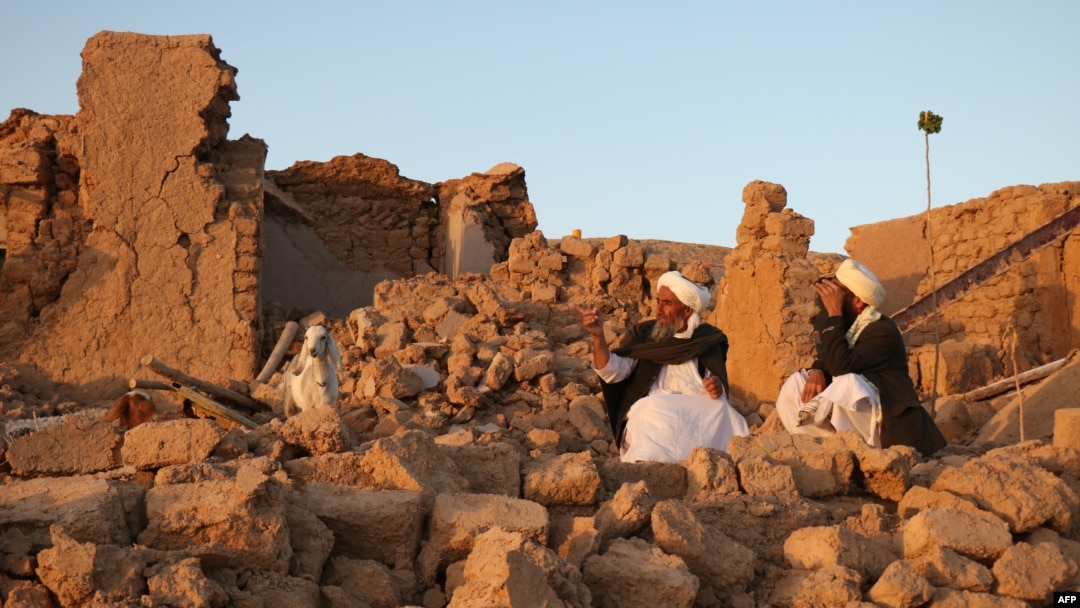Rescue efforts continued October 8 in western Afghanistan a day after a series of powerful earthquakes left a wave of destruction and killed more than 2,000 people in what is being described as the worst such natural disaster in years in the quake-prone mountainous country.
The death toll from the magnitude-6.3 earthquake remains unclear with estimates varying widely.
Preliminary figures following the October 7 quake put the death toll at 100-320.
However, early on October 8, a member of the Taliban-led government said the updated death toll had surpassed 2,000.
Mullah Janan Sayeeq, a spokesman for the Taliban's Ministry of Disasters, told a news conference that 2,440 people were dead, about 10,000 were injured, and that more than 2,000 houses had been damaged or destroyed.
Your browser doesn’t support HTML5
Deadly Earthquakes Strike Northwestern Afghanistan
The epicenter of the first earthquake was some 40 kilometers northwest of Herat, which has some 700,000 people in the city and surrounding area. It was followed by at least three major aftershocks.
The U.S. Geological Survey (USGS) recorded the largest of the temblors at a magnitude of 6.3, with the latest aftershock coming about 30 kilometers northeast of the city of Zindah Jan, which has a population of about 70,000 people.
“This earthquake was preceded by a 6.3 earthquake that occurred approximately 30 minutes before,” the USGS said.
Disaster authority spokesperson Mohammad Abdullah Jan said four villages in the Zindah Jan district in Herat Province bore the brunt of the quake and aftershocks.
The World Health Organization in Afghanistan said it dispatched 12 ambulance cars to Zindah Jan to evacuate casualties to hospitals.
The quake caused panic, said Banafsha, a resident of Jibril district in Herat Province, in an interview with RFE/RL's Radio Azadi.
"It was around 11:15 in the morning when the first earthquake occurred. After that, there were several other tremors, all the people ran out of the houses, no one stayed at home because they were afraid of the earthquake and other tremors,” Banafsha said.
Faisal, a resident of Herat city, said he spent the night with his wife and children in the open air.
“Last night, we went outside in the city and stayed under a tent because we were afraid of a possible aftershock,” he told Radio Azadi.
“Many people spent the night outside. Our family was also terrified and very scared. The children were very scared.”
Ali Ahmad Naab, the head of the communications department of the Young Merchants Union in Herat, told Radio Azadi that “even now, we are trying to gather [our group’s] members from the area and take them to the help earthquake victims.
“People are coming together to help save those who are possibly left under the rubble, God willing,” he added.
AP reported that people in Herat had rescued a baby girl from a collapsed building after she had been buried in debris. A video showed the child being eased from the ruins from out of the hands of her mother, but it was unclear if the mother had survived.
The Swiss-based Doctors Without Borders (MSF) set up five medical tents at the Herat Regional Hospital with the ability to handle up to 80 patients at a time.
Meanwhile, Afghan cricket star Rashid Khan has said that he will donate the money he receives for the 2023 Cricket World Cup to the victims of the earthquakes in Herat.
Khan wrote on social media that he will also launch a fund-raising campaign to call upon those who can support those affected by the disaster.
Earthquakes are common in the Herat region of northwest Afghanistan and across the nearby border with Iran.


